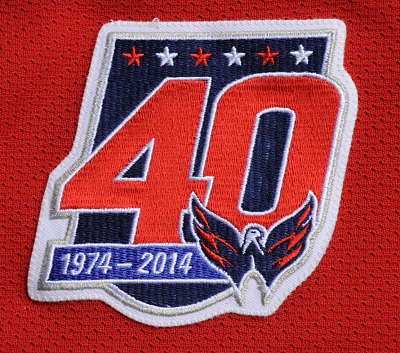Material - Durene Knit
The durene knit fabric is a nylon/cotton blend that was introduced in the 1960's. The jerseys worn before its introduction were made of wool and became very heavy as they absorbed moisture. The durene jerseys were light and did not suffer from this problem.

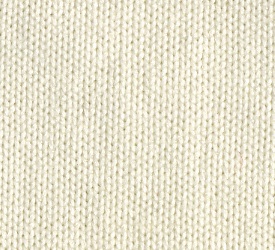
Material - Knit
The Capitals wore different types of knit jerseys. In 1980-81, they wore a lightweight knit which ripped very easily and these jerseys typically have a lot of sewn repairs. In 1981-82, 1982-83 and 1985-86 they wore a heavier knit.
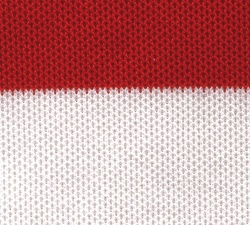
Material - Mesh
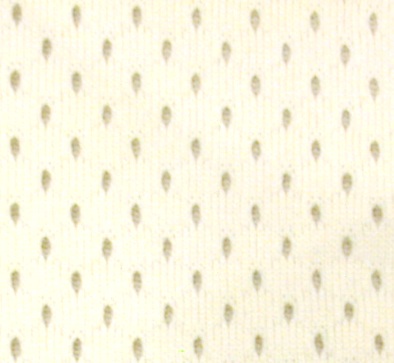
Material - Air-Knit
The Air-Knit material has been very prominent in jerseys from 1985 to today and is identified by its tiny holes that allow air to flow through the jersey. The pictures below show the slightly open weave that gives the material its name. The Air-Knit material has been used in Capitals jerseys from 1986-87 to the present. There are two variations of this material, referred to as the large hole and small hole varieties. The large hole variety is a heavier material and has slightly larger airholes. I believe this type of Air-Knit was only used in 1986-87. The small hole variety has been used from 1986-87 to the present. From the first two pictures it can be seen that the large hole Air-Knit has a slightly different texture to it.
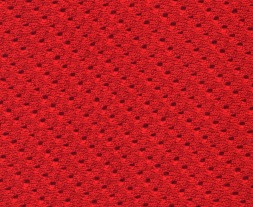
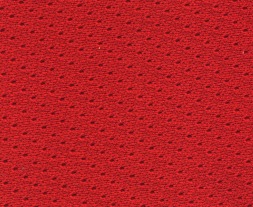
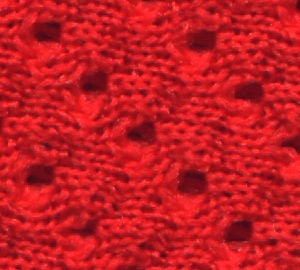
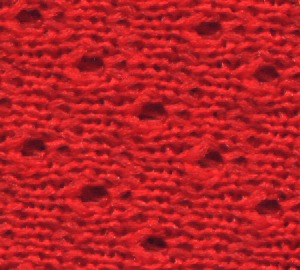
Material - Rbk Edge
The Rbk Edge 1.0 jersey consists of four lightweight fabrics. A description from Reebok's
website is below.
Soon after the 2007-08 season began, Reebok started making the Rbk Edge 2.0 jerseys. These
jerseys replaced the 4Way Stretch Pique and X-trafil materials with the older
Air-Knit material. Another difference is that the 2.0
jerseys have the elbows reinforced with a second layer of Air-Knit material.
- The jersey’s stretch fabric in the collar features Rbk’s innovative PLAYDRY™ moisture
management technology to maximize comfort, breathability and temperature control.
- The stretch mesh in areas including the underarms and back provides additional range
of motion and increased ventilation.
- 4Way Stretch Pique features Rbk’s latest innovation, BEAD AWAY™ water repellent technology.
The 4Way Stretch Pique offers freedom of movement while retaining 76 percent less moisture
than the current NHL jersey.
- X-trafil is incorporated into high-abrasion areas such as the shoulders and elbows to
provide increased durability.
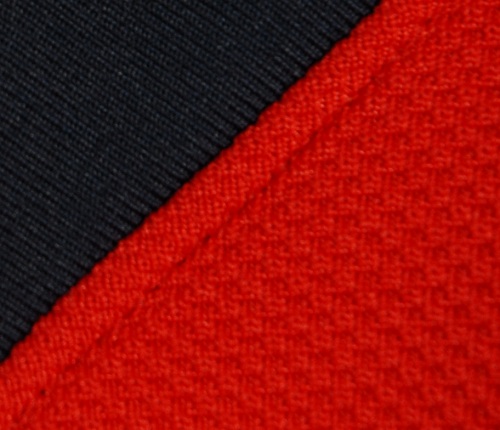
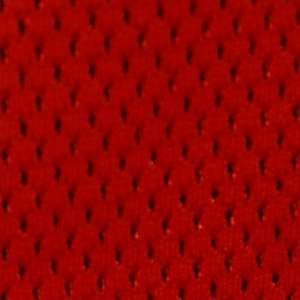

Fight Strap - Garter Style
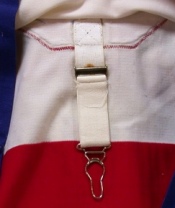
Fight Strap - Cloth Loop
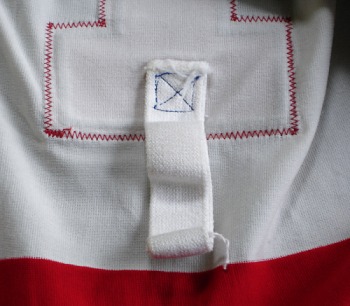
Fight Strap - Fat Shoelace / Ribbon Style

Fight Strap - Velcro and Snap style
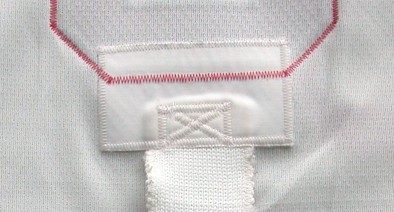
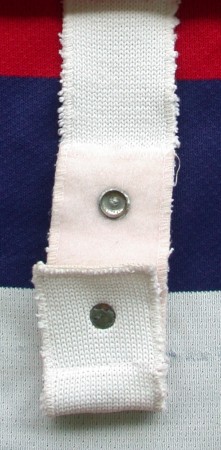
Notes - Recycling
Through my research, I have found that it was very rare for the Capitals to recycle jerseys from one season to the next. They did carry jerseys over into the following preseason on many occasions, but they usually had a new set of jerseys ready to go for the season opener or in some cases they began wearing the new set in preseason. One instance where jerseys were recycled is seen with the black third jerseys in the late '90s. Several players wore the same jersey for 2 and even 3 seasons. Some of the jerseys were even worn over 2 or 3 seasons by more than one player.
Notes - Sandow
During the 1980 and 1981 preseasons, the Capitals traveled to Sweden for the Dagens Nyheter Cup. They won the tournament in 1980. During those games they had a second set of jerseys which were made by Sandow Sporting Knit. It is not clear whether any of the Sandow jerseys were actually worn in any of those games.
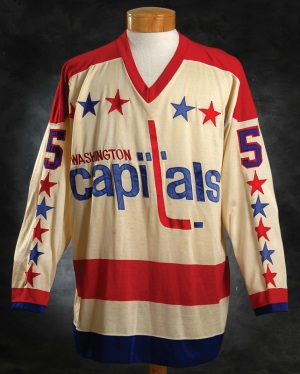

Notes - Wilson Mesh
During the 1970's, Wilson manufactured the jerseys for the Capitals. They were durene knit jerseys, however some hockey cards from the 1976-77, 1977-78, and 1978-79 OPC sets show Capitals players in mesh jerseys. These jerseys were also manufactured by Wilson and were worn during the team's preseason games before the 1974-75 and 1975-76 seasons. They are made of a thin mesh material with screened-on stripes.
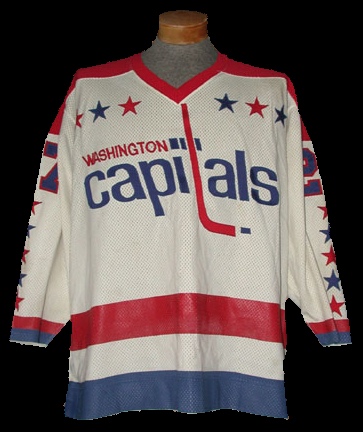
Patches - Capital Centre 10th Anniversary Patch
During the 1983-84 season, the Capitals wore a patch on the right shoulder of their home jerseys to commemorate the 10th Anniversary of the Capital Centre in Landover, MD. Construction began on August 24, 1972 and was completed on December 5, 1973. The Capitals played their first game in the building on October 15, 1974 and tied the Los Angeles Kings 1-1.
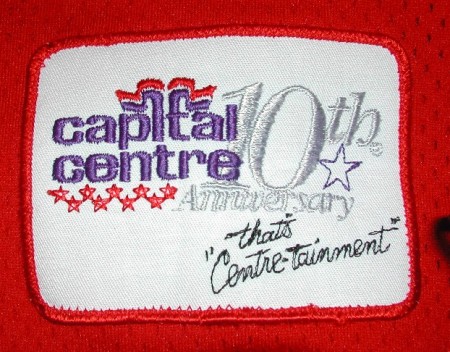
Patches - NHL 75th Anniversary Patch
During the 1991-92 season, all NHL teams wore a patch on the front of the right shoulder of their jerseys to commemorate the 75th Anniversary of the NHL.
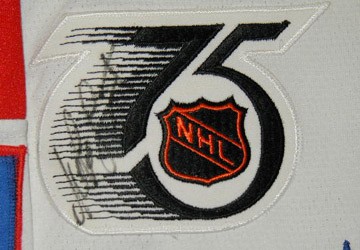
Patches - Stanley Cup 100th Anniversary Patch
During the 1992-93 season, all NHL teams wore a patch on front of the right shoulder of their jerseys to commemorate the 100th Anniversary of the Stanley Cup.
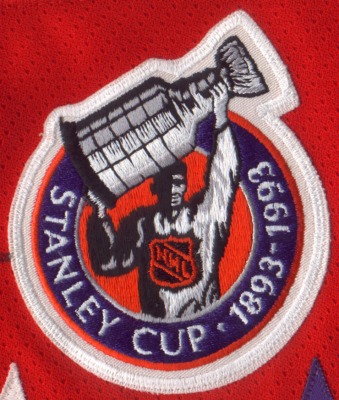
Patches - Washington Capitals 20th Anniversary Patch
During the 1993-94 season, the Capitals wore a patch on the front of the right shoulder of their jerseys to commemorate the 20th Anniversary of the team.
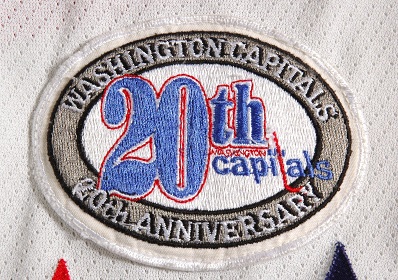
Patches - Jack Button "Bulldog" Memorial Patch
During the 1996-97 season, the Capitals wore a patch on the front of the right shoulder of their jerseys in memorium of Jack Button, who had been the team's Director of Player Personnel and Recruitment since 1979. Jack started out with the Rochester Americans in 1959 and later moved on to be Assistant General Manager of the Pittsburgh Penguins in 1969. He was the General Manager for the Penguins in 1974-75. In 1975, he began working for the NHL and founded the Central Scouting system. As Director of Player Personnel with the Capitals, Jack was responsible for bringing a number of talented hockey players over from Europe including Michal Pivonka and Peter Bondra.
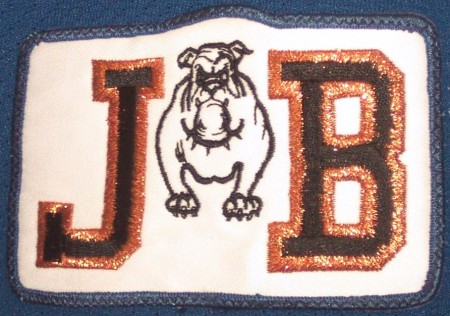
Patches - 1998 Stanley Cup Finals Patch
During the 1998 Stanley Cup Finals, the Capitals wore a patch on the front of their right shoulder. Jerseys with this patch were worn for two home games and two road games each. Patches were also added to the jerseys of players who did not play in the finals, as jerseys were prepared for many of the possible call-ups in Portland.

Patches - Washington Capitals 25th Anniversary Patch
During the 1998-99 season, the Capitals wore a 25th Anniversary patch for only about 4 games. It was worn on the front of the right shoulder of their black alternate jerseys and apparently was not given the OK by the NHL and had to be removed.
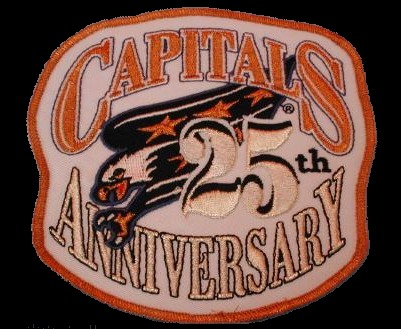
Patches - NHL 2000 Patch
During the 1999-2000 season, all NHL teams wore a patch on the front of the right shoulder of their jerseys as a part of the millenium celebration for the year 2000.

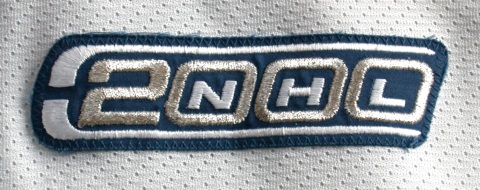
Patches - September 11, 2001 Patch
During the 2001-2002 season, the Capitals wore a patch on the front of the right shoulder of their jerseys as a remembrance of the victims of the terrible tragedies, which took place on September 11, 2001.

Patches - Washington Capitals 35 Seasons Patch
On March 6, 2010, the Capitals wore a patch on their home red jerseys to commemorate their 35th season as an NHL franchise. The patch was worn on a new set of jerseys and was only worn for one game. The jerseys were auctioned at the end of the game.

Patches - Washington Capitals 40th Anniversary Patch
During the 2014-2015 season, the Capitals wore a patch on the front of the right shoulder of their jerseys to commemorate the 40th anniversary of the team.
